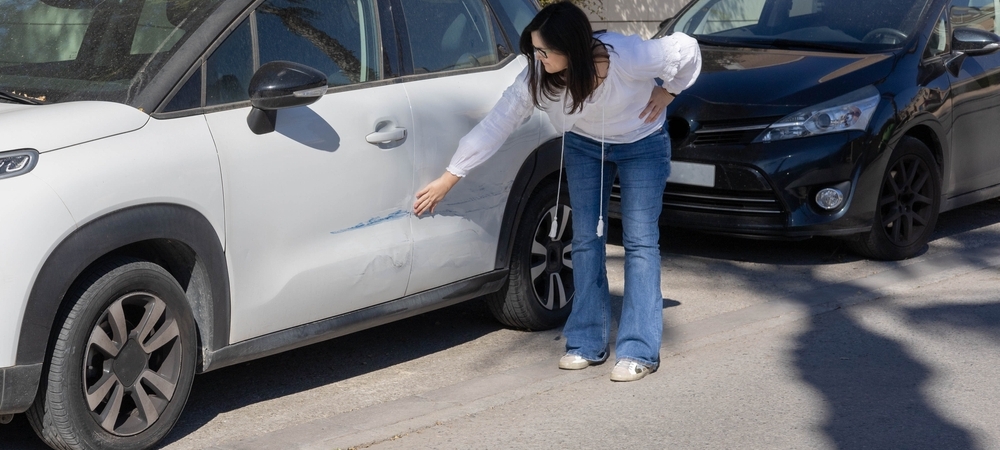If you’re the victim of a hit and run, it’s important to know what kind of evidence you’ll need to pursue a claim. Here’s what you should know.
When it comes to filing an insurance claim, the burden of proof is on the policyholder to show that the other driver was at fault. This can be difficult to do if the other driver fled the scene. You will likely be filing a claim against your insurance policy unless there is some possibility that you can identify the at-fault driver.
Identifying Details
There are a few things you can do to try to identify the at-fault driver, even if they fled the scene. First, get the license plate number of the other vehicle and any other identifiers such as the make, model, or color of the vehicle, if possible. Police may be able to narrow down possible suspects using this information, especially if the at-fault driver is a “usual suspect.” Even a partial license plate number, paired with a few other identifiers, can help you with your search.
Footage
If you have a dashcam or other video footage of the incident, be sure that you download this file as soon as possible and save it in multiple places. This can be helpful evidence for your insurance company. As dash cameras become more common, more and more drivers who flee the scene of accidents are caught because of the camera’s irrefutable evidence.
If the accident happened near a business or other location with surveillance cameras, there’s a chance that the footage may have captured the incident. This can be helpful in identifying the other driver and vehicle involved or at least proving that you did not cause the accident, even if identifying details are not present in the video.
Witnesses
Witnesses can also help identify the at-fault driver or corroborate your side of the story while you are working through a claim with your insurer. If there were any witnesses to the accident, their statements could be tremendously helpful in proving that the other driver was at fault. Be sure to get the contact information for any witnesses so that your insurance company can reach out to them.
Damage To Your Vehicle
The damage to your vehicle can also help establish fault. For example, if the damage is consistent with being hit from behind, this would suggest that the other driver was at fault — especially in tandem with your account of the accident and any possible eyewitness statements.
How Do Insurance Companies Handle Hit-And-Run Accident Claims?
Insurance companies handle hit and run accidents in a few different ways. The first thing they will do is try to identify the at-fault driver. If they are successful, then the claim will be processed as a normal accident claim — provided that the at-fault driver (or the owner of the vehicle they were operating) has insurance. Suppose they are able to identify the driver and they are insured, but their limits do not adequately cover the damages you have suffered. In that case, you may need to file a second claim against your underinsured motorist policy.
If the insurance company is unable to identify the at-fault driver, then the claim will likely be processed as an uninsured motorist claim. Uninsured motorist coverage (typically bundled with underinsured motorist coverage) is optional in some states and required in others. If you have this coverage, then your insurance policy will cover the damages up to your policy limit. Be aware that your premium may go up at your next renewal if you make an uninsured motorist claim.
If you are unsure of whether or not you have uninsured motorist coverage on your existing auto insurance policy, are not clear on what your limit for this type of coverage is, or want to learn more about filing a claim through this policy, we encourage you to reach out to your insurance agent to get a clear understanding of your coverage.
In some cases, it may be possible to file a personal injury lawsuit against the at-fault driver if they are identified. This could be an option if your damages exceed your policy limit or if you have suffered severe injuries such as permanent disability or disfigurement. However, it is best to approach the situation with the assumption that you will not be able to find the other driver.
Focusing solely on tracking down the other driver can lead to all sorts of disappointing outcomes that will distract you from the most important parts of the aftermath of your accident: focusing on your recovery and getting your life back on track.
What To Do After a Hit-And-Run Accident
No matter what kind of evidence you have, it’s important to act quickly after a hit-and-run accident. The sooner you file a claim, the better chance you have of success. Depending on the state you live in, you may have anywhere between one and four years to file a claim before the statute of limitations bars your ability to take legal action, and while this may seem like plenty of time, this is best used to work with your insurer towards a fair settlement with lots of buffer for filing a lawsuit.
Working With an Attorney After a Hit-And-Run Accident
If you’ve been a hit-and-run victim, you may want to consider working with an experienced personal injury attorney. An attorney can help you investigate the accident, gather evidence, and file a claim with your insurance company. If your case goes to court, an attorney can also represent you and fight for the compensation you deserve.
If you have any questions about hit-and-run accidents or need help with your case, contact 1-800-Injured today for a free consultation. We will connect you with an experienced personal injury attorney who can help you make sense of your situation, answer your questions, and provide you with more understanding about what you can expect with this confusing and often stressful process.



